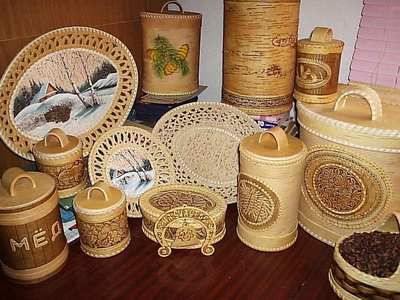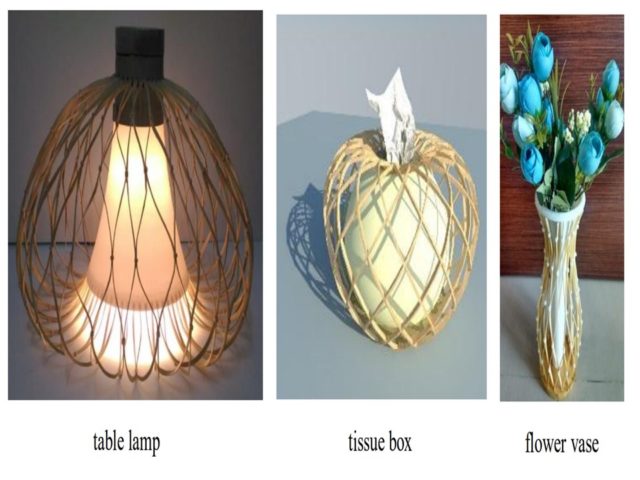PDE Students - 3D Technology - Bamboo and Society 5.0
Fostering and Empowering Indonesia is commitment of Binus University, in which Binus Aso School of Engineering (BASE) is complying toward this commitment. In global perspective, it refers to Society 5.0, that can be implemented by PDE Students through 3D Technology and Bamboo as Home Accessories Products.
Source: Dinarah, Firdaus and Eliata; Indonesia Furniture
Bamboo is very characteristic of the traditional community life in Indonesia, which produces different variants of its products done traditionally and taught for generations. These traditional techniques are sometimes not in line with the fast-changing pace of life, such that they give the impression of being old-fashioned. This study aims to bring together the application of 3D printing technology with traditional techniques of bamboo processing, which in turn will have an impact on the sustainability
of the bamboo design itself. Thus, it integrates the Bamboo Characteristics as Home Accessories Products that are beneficial for community life in Indonesia, as part of the PDE Implementation in Society 5.0

3D Technology
The locking system is used to clamp bamboo sheet slabs, so that an accordion fold pattern (concertina fold) is formed. Some locking materials that have been tried such as brass wire, nylon thread, strings and cable ties show unfavorable results. The choice of locking material falls on PLA plastic with a special design form which was made up to seven times of experimentation, and printed using a 3D printer.
Through a series of trials of Ori Bambu combined with 3D printing technology, the authors made it into
three bamboo product design variants with concertina fold technique inspirations, namely: table lamp, tissue box and flower vase.

Ori Bamboo
In its use in society, bamboo as a woody plant sometimes experiences some limitations. This is due to the occurrence of the bio-degradation process and its changing nature according to environmental conditions. Therefore, several treatments to increase bamboo durability and strength need to be done so that bamboo processing becomes more optimal. Factors that influence the bamboo materials are physical properties that make it difficult to be processed mechanically, variations in dimensions, and unevenness segment length. Those are the constraints that need to be considered in bamboo processing. The understanding related to the physical and mechanical aspects of bamboo will be able to give right directions on the processing methods and the properties of the product to be made. As an illustration, in determining the direction of slices (thin strip), it is also necessary to know the nature of bamboo slicers which can be tangential, radial, and longitudinal which may affect the flexibility and strength of the bamboo.

Comments :